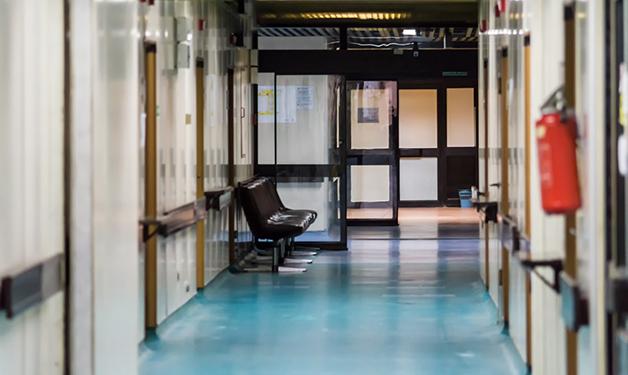
Nighttime discharges of patients are associated with higher mortality and readmission rates, but VGH is bucking the trend.
Nocturnal discharges from the intensive care unit (ICU) are statistically linked to worse patient outcomes, including readmission to the ICU and a higher risk of mortality. However, new research out of Vancouver Coastal Health Research Institute (VCHRI) has found that Vancouver General Hospital’s (VGH's) novel follow-up care may be adding a layer of protection against this concerning trend.
“VGH’s medical response teams consistently follow up with every ICU patient after discharge, and we believe that this may have played a role in our findings,” says Dr. Donald Griesdale, a VCHRI researcher whose study into ICU discharges was published in the Canadian Journal of Anesthesia in 2020.
Griesdale, lead author Dr. Nicholas Fergusson and co-authors reviewed 8,862 ICU discharges at VGH—representing over 7,000 patients—for their research. Counter to their hypothesis, they found no association between nocturnal discharges and readmissions to the ICU within 72 hours, nor mortality within 30 days. This was despite the fact that their review found a positive association between higher occupancy rates in the ICU and nocturnal discharges.

At VGH, a designated Critical Care Outreach Team—consisting of a nurse, critical care representative, respiratory therapist and critical care physician—follows up with every ICU patient within 12 hours of discharge. On top of that, the team that discharged the patient from the ICU also follows up within 24 hours to make sure that all of the patient’s care needs have been met, such as ensuring that medications are being administered properly and the patient’s condition is not deteriorating.
“The follow-ups conducted by the Critical Care Outreach Team ensures that no one falls through the cracks.”
“Even when ICU occupancy was at 120 per cent, and there was concern that perhaps we might discharge someone prematurely to make room for more urgent cases, we did not see a rise in readmission rates.”
Consistent follow-ups could substantially reduce concerns about discharge time
ICU over-occupancy is a bellwether of hospital well-being, notes Griesdale. Bed scarcity in the ICU can increase the potential for premature discharges, which can put patients at greater risk of complications from symptoms and medications after they move to the non-critical hospital ward.
“The impetus for this study was to determine whether care providers at VGH should change our nocturnal ICU discharge practices to better protect patients.”
“We know that a full ICU increases the likelihood of a nocturnal discharge, and the literature shows us that discharging patients from the ICU after hours increases the likelihood of a worse outcome because that is when there are fewer staff and specialists on hand to address urgent care needs,” says Griesdale. “The fact that this is not the case for VGH’s ICU tells us that something unique is happening here that may be replicable at other care facilities.”

Protocols such as the post-discharge follow-ups that have become commonplace at VGH could support better patient care and outcomes during times when there is bed scarcity in the ICU, for example, during a pandemic.
“The big take-home is about longitudinal care, and not siloing care,” says Griesdale. “If we wrap care around patients, it does not matter if the discharge is at night or during the day. What matters is having systems in place to make sure the appropriate care providers check back with patients at optimal times to ensure their care needs are being met.”


